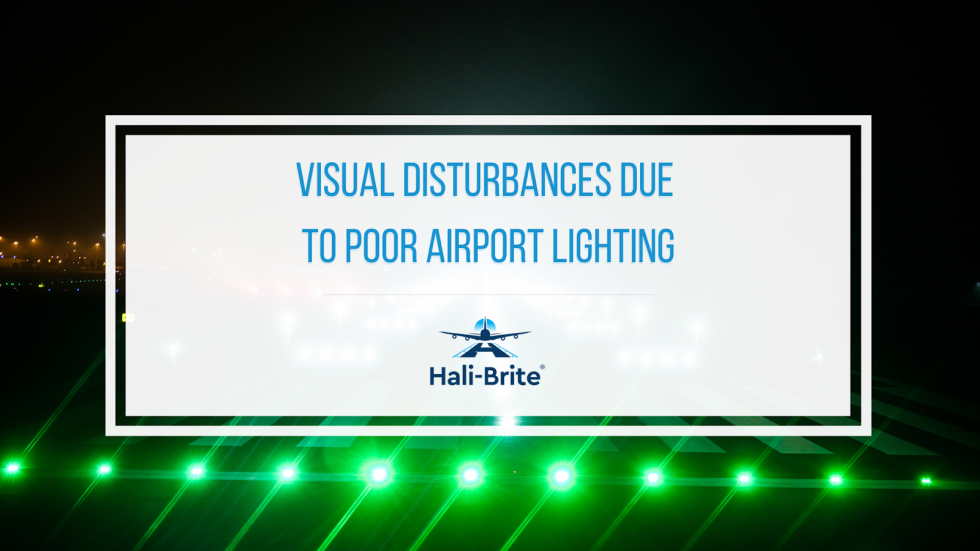Airport navigational lighting aids are crucial for aviation safety as they help pilots navigate the airport environment safely and efficiently. Airport lighting systems must be certified by the Federal Aviation Administration (FAA) to ensure they meet the safety standards required for aviation operations.
Visual disturbances caused by insufficient or faulty airport lighting can pose a significant risk to aircraft operations. This article will discuss the causes and effects of these visual disturbances, including the recommended solutions to prevent accidents caused by poor airport lighting.
- Causes of Visual Disturbances Due to Poor Airport Lighting
- Effects of Visual Disturbances On Pilots and Passengers
- Solutions to Prevent Accidents Due to Poor Airport Lighting
Causes of Visual Disturbances Due to Poor Airport Lighting
Poor airport lighting is one of the leading factors contributing to visual disturbances that can affect pilots during landing, takeoff, and taxiing on airport runways and taxiways. There are several causes of visual disturbances due to poor airport lighting, which include:
Insufficient Lighting On Runways
Runways are essential areas in airports where landing and takeoff operations take place. Insufficient lighting on airport runways can make it hard for pilots to identify important runway markings, such as runway edges, centerlines, and touchdown zones. The visual disturbances caused by insufficient lighting on runways may lead to serious airport accidents.
Inadequate Signage
Signage is crucial in helping pilots identify taxiways and runways during aircraft operations. Inadequate signage can lead to confusion and delays, and pilots may have to rely on visual cues, which can be challenging in low visibility conditions. Poorly lit signage can worsen this problem, making it difficult for pilots to read and interpret critical information effectively.
Poorly Designed Lighting Systems
Poorly designed lighting systems can cause glare and reflections, making it hard for pilots to see and maintain visual orientation. Such visual disturbances can be particularly severe during takeoff and landing when pilots need to focus on the runway and any obstacles in their path. Poorly designed lighting systems can also result in uneven lighting, creating areas of high and low light intensity, which can be disorienting for pilots.
Effects of Visual Disturbances On Pilots and Passengers
Visual disturbances can have significant effects on both pilots and passengers during flight operations. These effects include:
Difficulty In Landing and Takeoff
Visual disturbances can make it difficult for pilots to precisely gauge their distance from the runway during landing or takeoff. Such cases may lead to a hard landing or overshooting of the runway, which can be dangerous for passengers and crew members. Additionally, pilots may fail to notice any obstructions on the runway or taxiway due to poor airport lighting, causing possible collisions or mishaps.
Increased Risk of Accidents
Poor airport lighting can cause visual disturbances, which increases the risk of accidents. Pilots rely heavily on visual aids to navigate the runway, taxiways, and airspace. If navigational aids are unavailable or distorted due to poor lighting, it can increase the likelihood of aircraft accidents, such as runway incursions, excursions, collisions, or missed approaches. These accidents can result in significant damage to aircraft, injury, or death to passengers and crew members.
Physical Discomfort and Stress
Poor airport lighting can cause physical discomfort and stress to both pilots and passengers. For pilots, visual disturbances can cause eye strain, headaches, and fatigue, which can negatively impact their ability to focus and make critical decisions during flight operations. For passengers, poor lighting can cause discomfort and anxiety, particularly during takeoff and landing.
Solutions to Prevent Accidents Due to Poor Airport Lighting
Several solutions can be implemented to prevent accidents due to poor airport lighting. Here are some of them:
Upgrading Lighting Systems
Upgrading airport lighting systems to more advanced technologies, such as LED lighting, can significantly improve visibility for pilots, making it easier to pinpoint airport locations and identify critical information. Additionally, more lighting systems are more energy efficient, which helps reduce the environmental impact of airport operations. Hali-Brite’s Airport LED Rotating Beacon, for example, has a 65% power reduction over traditional metal halide lamps.
Proper Maintenance of Lighting Systems
Airport lighting systems must undergo regular maintenance to ensure they function optimally and provide adequate visibility for pilots. The FAA has provided recommended guidelines for airport lighting system maintenance, including maintenance planning, preventive maintenance inspection, repair, installation, and calibration. Proper maintenance of lighting systems can help prevent unexpected failures, reducing the risk of accidents and disruptions to airport operations.
Regular Safety Inspections
Airports must conduct regular safety inspections of lighting systems to maintain safe aircraft operations, especially at night. A preventive maintenance inspection (PMI) helps airports identify potential hazards or lighting equipment issues that may compromise the safety of passengers and crew members. The PMI guidelines for each airport lighting aid are provided by the FAA. The maintenance routine specified in the guidelines can be modified to fit local airport conditions.
Choose Hali-Brite
Having a proper airport lighting system is essential to avoid visual disturbances during flight operations. We at Hali-Brite can provide you with quality, energy-efficient, and cost-saving lighting solutions that comply with the FAA standards, ensuring airport safety. To get a free quote, call us at (218) 454-0956 or contact here.


